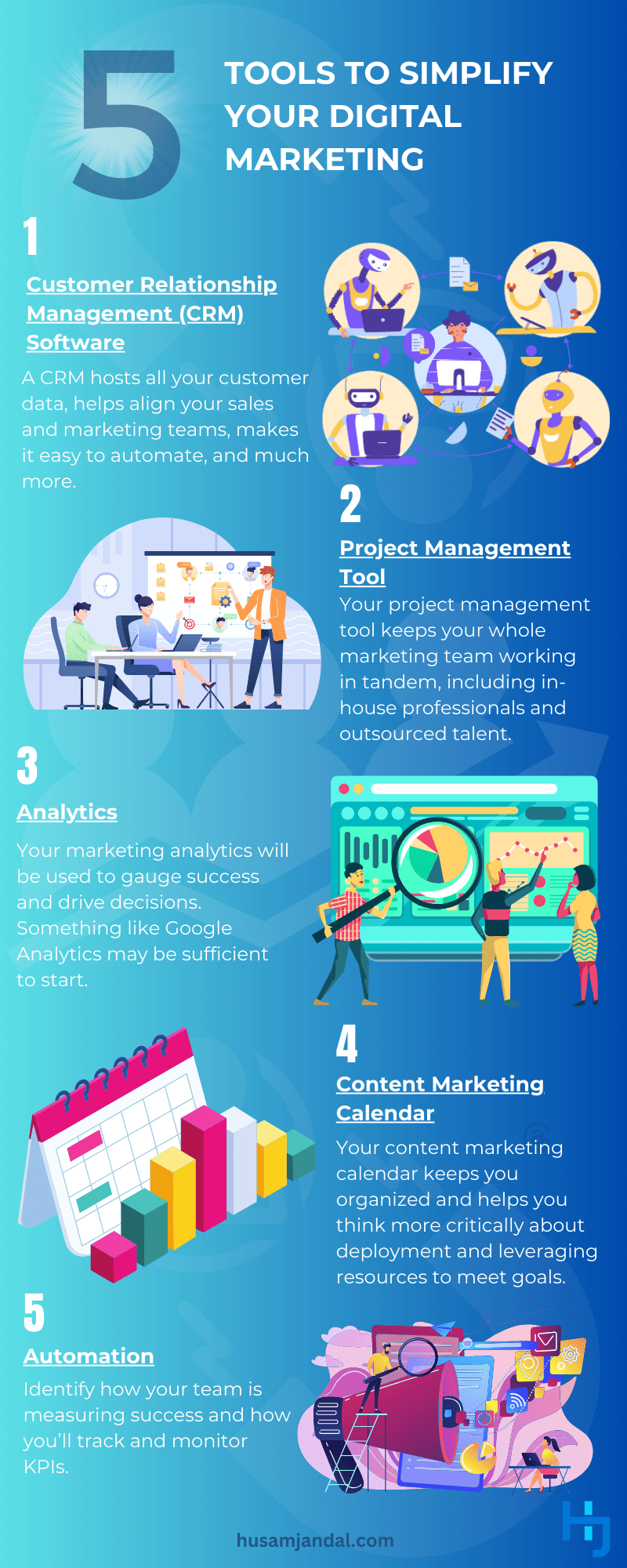 Plato once said, “The beginning is the most important part of the work.” No doubt, this is because what you do in the early stages impacts your results. If you’re following the digital marketing tree process, you already know which initiatives you’ll kick off and perhaps even have a timeline, but getting started can still seem overwhelming. These tips will simplify your digital marketing kickoff, ease you into the process, and help you get better results.
Plato once said, “The beginning is the most important part of the work.” No doubt, this is because what you do in the early stages impacts your results. If you’re following the digital marketing tree process, you already know which initiatives you’ll kick off and perhaps even have a timeline, but getting started can still seem overwhelming. These tips will simplify your digital marketing kickoff, ease you into the process, and help you get better results.
1. Lay the Foundation First
Remember to lay the foundations before kicking off any digital marketing efforts. These initiatives will help you focus your efforts and improve your results.
Leverage Personas
Your personas are fictional representations of your actual customers. They guide your marketing decisions and are used to create content that speaks to readers, so they must be created as one of your early initiatives.
Build Your Brand
Your branding ensures your marketing messages stand out from others and are retained by your audience. It extends beyond brand colors and fonts. It’s the essence of your brand and includes things like your voice, mission, and values. Develop brand guidelines before you begin marketing to ensure consistency going forward and ensure everyone involved in your marketing receives a copy.
Define Marketing Goals
Well-defined goals tell you where to focus your energy. Tie your digital marketing goals to overall business goals and identify which metrics you’ll use to gauge success. Also, ensure that you have tracking set up that allows you to collect essential metrics and that you’re scheduling time to review your progress.
2. Know Your Priorities
The digital marketing tree takes the guesswork out of deciding which channels to leverage at various stages of marketing maturity. Your website and email marketing take precedence as “ground fruit,” followed by social media and paid search as “low-hanging fruit.” However, you’ll still have to determine your personal priorities within each category.
For instance, email marketing opportunities are endless, but your resources are not, and not all efforts will deliver the same return. You’ll need to decide which types of emails you want to send and determine the cadence. Some form of a weekly, bi-weekly, or monthly newsletter is a good start. However, you’ll also need to allocate resources for creating welcome emails, cross-promotion and upselling emails, reengagement campaigns, and other messages as appropriate. As you make these decisions, you may also want to address issues that impact email deliverability, such as policies for email list hygiene and how to ramp up sends slowly to avoid looking like a spammer.
You’ll face similar decisions with each channel. Although you don’t need to evaluate every channel before you begin, you should have some idea of what’s involved in kicking each one off to ensure your implementation timeline is realistic and that you’re prepared for ongoing management needs after kickoff.
3. Get the Right People in Place
Nearly half of all small business owners handle all their marketing entirely on their own, Nerd Wallet reports. This is concerning because the owner’s strategic vision and leadership are best applied to core areas of the business. Just as you, the business expert, will produce better results for your company by being given the ability to focus on those tasks, your digital marketing will perform better when individual tasks are handled by experts.

This does not mean you need to hire a dedicated person for each role. Instead, evaluate which initiatives you intend to implement in the coming months and make a list of professionals typically involved. Then, identify whether the role can be outsourced or should be kept in-house.
For instance, the ground fruit activity of developing a website usually requires the help of a developer, SEO specialist, analytics professional, and copywriter. If you are only working on this one initiative, it might make sense to outsource all these jobs. However, if you’re following the digital marketing tree philosophy, you’ll be moving into low-hanging fruit and mid-range fruit after. Knowing this will likely change your approach and what you look for when choosing a candidate. You can also leverage your general timeline to determine when to start looking for and filling roles to ensure you’re unrushed and genuinely find the best fit.
4. Equip Your Team for Success
Once you know which channels you’re leveraging and who will handle tasks, you can start procuring and setting up tools to simplify digital marketing. I’ll cover some examples below, though your list will vary depending on which initiatives you’re implementing.
Customer Relationship Management (CRM) Software

A CRM hosts all your customer data, helps align your sales and marketing teams, makes it easy to automate, and much more. HubSpot, Salesforce, and Zoho CRM are popular options, though it’s essential to evaluate all your options to ensure the one you select works for your business and will grow with you.
Project Management Tool
Your project management tool keeps your whole marketing team working in tandem, including in-house professionals and outsourced talent. It’s imperative for communication and efficiency. Popular examples include Wrike, Asana, and Trello. Again, evaluate your options and experiment with different options before committing. Because most companies leverage a single project management tool for all departments, involving all departments in this decision may make sense.
Analytics
Your marketing analytics will be used to gauge success and drive decisions. Something like Google Analytics may be sufficient to start. However, you’ll want to work with your analytics professional to ensure you collect all the data you need and that it’s easy to access on demand.
Content Marketing Calendar
Your content marketing calendar becomes imperative as you reach the low-hanging and mid-range fruit stages of the digital marketing tree because it keeps you organized and helps you think more critically about deployment and leveraging resources to meet goals.
Automation
Your CRM and project management tools will likely already have built-in marketing automation capabilities. Familiarize yourself with them to ensure you’re receiving maximum value. Then, implement free-standing automation tools to fill gaps. For instance, you’ll likely need an independent social media scheduling tool when you kick off your social media initiatives.
5. Remain Agile
Leverage data to optimize your digital marketing and improve results as you go. Experiment with new opportunities as they emerge. Continue learning. The world of digital marketing is constantly evolving, and your strategy must evolve with it to gain and maintain a competitive edge.
Get Help Simplifying Your Digital Marketing Kickoff
As a digital marketing consultant with a background in business, I’m often retained by small and mid-sized brands poised for growth but unsure where and how to start. It’s gratifying to help them become established and guide them to their first digital marketing victories. If you’re ready to achieve real business growth through digital marketing, I welcome the opportunity to connect with you, too. Please contact me for a complimentary consultation.




































































